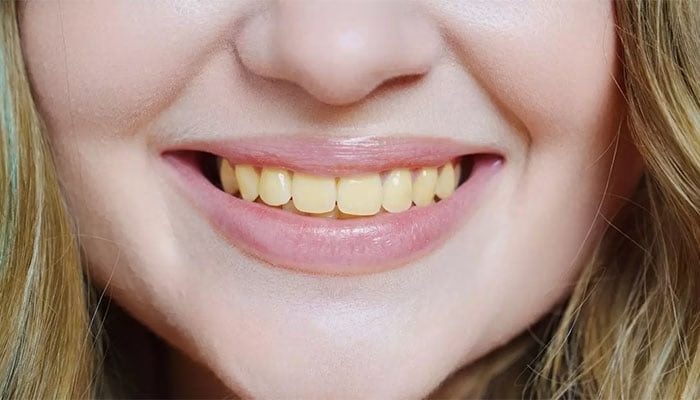Maintaining a bright smile is important, but what happens when your teeth turn yellow even though you follow good oral hygiene practices? Dr. Zainab McKay, a dentist from the United States, shares insights into the habits and mistakes that might be causing this issue. In a viral TikTok video, she highlights common errors people make, leading to discoloration and enamel damage over time.
Brushing Too Hard Can Harm Your Teeth
One of the most surprising reasons for yellowing teeth is brushing too aggressively. Many believe that applying more pressure while brushing ensures cleaner teeth, but this approach can wear down the enamel. The enamel is the protective white layer on your teeth, and once it erodes, the yellow dentin underneath becomes visible. This not only affects the appearance of your teeth but also increases sensitivity.
To prevent this, use a soft-bristled toothbrush and adopt gentle, circular brushing motions. This approach will protect your enamel while keeping your teeth clean and healthy.
How Diet and Lifestyle Affect Tooth Color
Your daily habits and diet play a significant role in maintaining or staining your teeth. Smoking is a leading cause of discoloration, leaving a yellow or brownish tint on your teeth over time. Similarly, beverages like coffee, tea, soda, and fruit juices contain staining properties and acids that weaken the enamel.
Foods high in sugar or acidity can also contribute to enamel erosion, making teeth more prone to discoloration. To minimize the impact, limit your intake of these foods and beverages. Drinking through a straw can help reduce direct contact with your teeth, and rinsing your mouth with water afterward can wash away staining agents.
Importance of Proper Brushing and Flossing
While brushing and flossing are essential for oral hygiene, the way you do them matters. Flossing helps remove plaque buildup in hard-to-reach areas, preventing yellowing. However, brushing immediately after consuming acidic foods or drinks can damage enamel. It’s best to wait at least 30 minutes before brushing to allow your enamel to stabilize.
Other Factors Contributing to Discoloration
Tooth discoloration isn’t solely caused by brushing and diet. Certain medications, such as antibiotics or antihistamines, can lead to yellowing over time. Aging also plays a role, as enamel naturally wears down with age, exposing the dentin. Genetics may also influence enamel thickness, making some individuals more prone to discoloration.
Preventing and Addressing Yellow Teeth
Prevention is always better than cure, but there are ways to tackle existing discoloration. Proper brushing techniques, using fluoride toothpaste, and flossing daily can help maintain white teeth. Additionally, rinsing with an alcohol-free mouthwash reduces bacteria and prevents stains.
For professional solutions, teeth whitening treatments can significantly improve discoloration. Dentists may also recommend enamel-strengthening products to protect and enhance your teeth’s appearance.
Common Myths About Yellow Teeth
A common myth is that whitening toothpaste can fix all discoloration issues. While these toothpastes can remove surface stains, they do not address deeper discoloration caused by enamel erosion. Another misconception is that brushing harder cleans teeth more effectively, but in reality, it damages enamel and makes teeth yellow.
Maintaining a Bright Smile
Keeping your teeth white and healthy requires more than regular brushing. By avoiding aggressive brushing, making smart dietary choices, and seeking professional care when necessary, you can maintain a radiant smile. Small changes in your habits, as suggested by Dr. Zainab McKay, can have a significant impact on your oral health.
Treat your teeth with care, and they’ll reward you with a confident, pearly white smile that lasts a lifetime.



